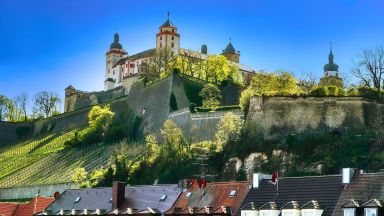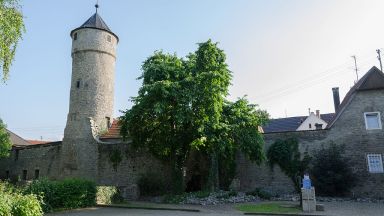Marburg: The Complete Guide
Marburg is a small historic town located in the central part of Germany, in the state of Hesse. It is situated on the river Lahn and is known for its medieval architecture, picturesque streets, and rich cultural heritage. The town has a population of around 75,000 people and is home to one of the oldest and most prestigious universities in Germany, the Philipps University of Marburg.
Marburg was founded in the 9th century and has a rich history that spans over a thousand years. The town is known for its well-preserved medieval old town, which features a number of beautiful half-timbered houses and historic buildings, including the Marburg Castle, the Elisabethkirche (St. Elizabeth’s Church), and the Town Hall.
One of the most famous landmarks in Marburg is the Elisabethkirche, which is a Gothic-style church dedicated to St. Elizabeth of Hungary. It was built in the 13th century and is known for its stunning stained-glass windows and beautiful interior. The Marburg Castle is another popular attraction in the town. It was built in the 11th century and is now used as a museum.
Marburg is also famous for its association with the famous Brothers Grimm, who spent several years in the town and collected many of their famous fairy tales there. The Brothers Grimm Museum is located in the town and is dedicated to the life and work of the famous writers.
In addition to its rich history and cultural heritage, Marburg is also a lively university town with a vibrant arts and culture scene. It is home to a number of theaters, museums, galleries, and music venues, and hosts several festivals and events throughout the year.
Visiting Marburg for the first time and wondering what are the top places to see in the city? In this complete guide, I share the best things to do in Marburg on the first visit. Top help you plan your trip, I have also included an interactive map and practical tips for visiting!
This website uses affiliate links which earn a small commission at no additional cost to you.
6 Best places to See in Marburg
This complete guide to Marburg not only tells you about the very best sights and tourist attractions for first-time visitors to the city but also provide insights into a few of our personal favorite things to do.
This is a practical guide to visiting the best places to see in Marburg and is filled with tips and info that should answer all your questions!
Lahn Wasserfall viewpoint

Location: Lahn Wasserfall viewpoint, Hirsefeldsteg, Marburg, Germany | Distance: 0.50km
Visiting Lahn Wasserfall viewpoint
Marburg Rathaus

Location: Rathaus, Markt, Marburg, Germany | Distance: 0.80km
Visiting Marburg Rathaus
Marburg Castle

Location: Landgrafen Palace, Schloß, Marburg, Germany | Hours: Museum 10am-6pm Apr-Oct, to 4pm Nov-Mar | Price: museum adult/concession €5/3 | Website | Distance: 0.90km
Visiting Marburg Castle
St. Elizabeth's Church, Maburg

Location: St. Elizabeth's Church, Elisabethstraße, Marburg, Germany | Distance: 1.50km
Visiting St. Elizabeth's Church, Maburg
Kaiser Wilhelm Tower, Marburg

Location: Spiegelslustturm, Hermann-Bauer-Weg, Marburg, Germany | Hours: Nov to March: Mon, Wed, Thu, Fri, Sat: 12 p.m. to 5 p.m; Sundays and public holidays: 11 a.m. to 6 p.m April 1st to Oct 31st: Mon to Sat: 1pm to 7pm; Sundays and public holidays: 11 a.m. to 7 p.m | Distance: 2.20km
Visiting Kaiser Wilhelm Tower, Marburg
Botanischer Garten Marburg

Location: Botanischer Garten, Marburg, Germany | Distance: 3.00km
Visiting Botanischer Garten Marburg


